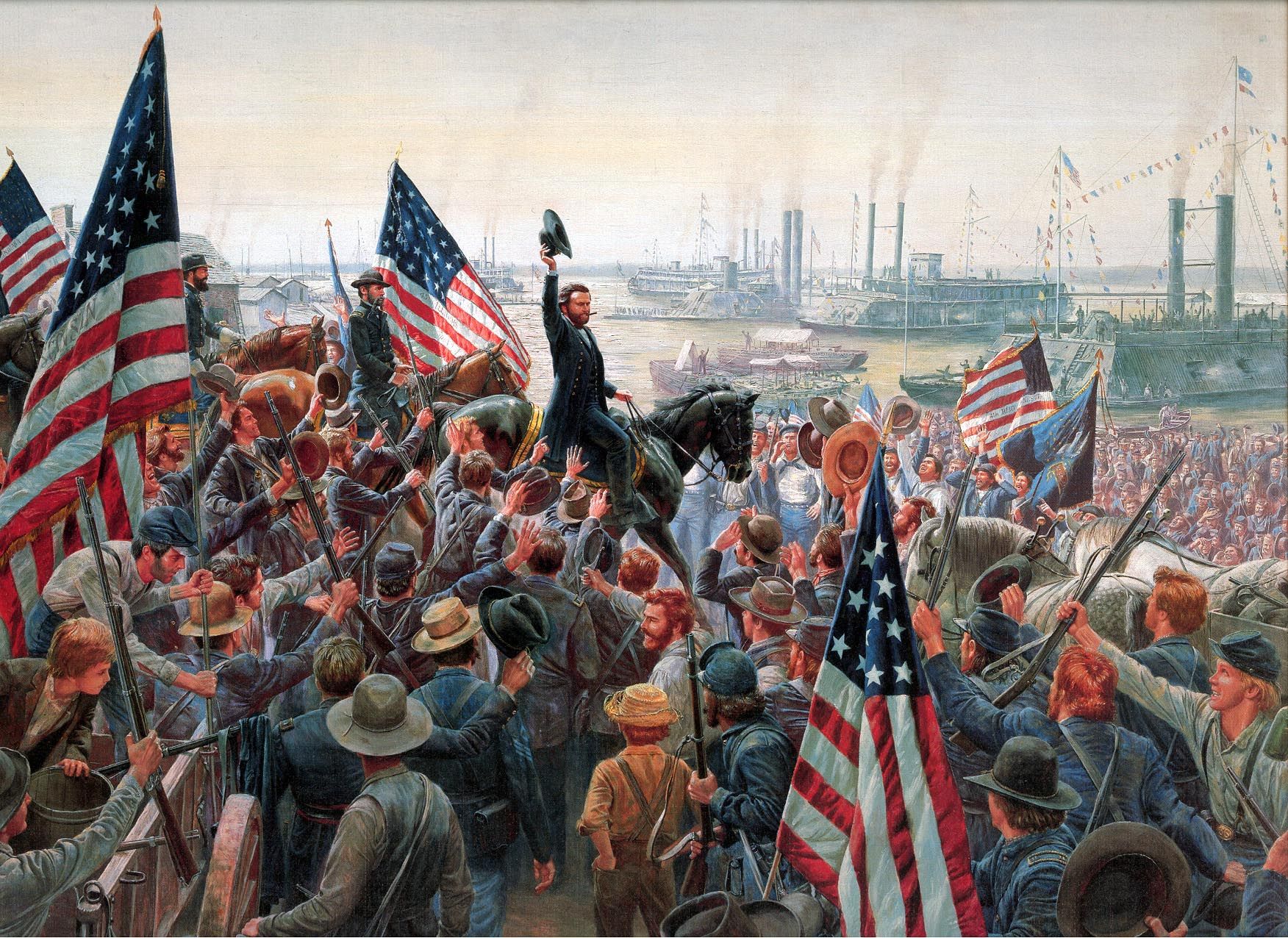American Civil War

In the 1860 presidential election, Republicans, led by Abraham Lincoln, supported banning slavery in all the U.S. territories. The Southern states viewed this as a violation of their constitutional rights, and as the first step in a grander Republican plan to eventually abolish slavery. The three pro-Union candidates together received an overwhelming 82% majority of the votes cast nationally: Republican Lincoln’s votes centered in the north, Democrat Stephen A. Douglas’ votes were distributed nationally and Constitutional Unionist John Bell’s votes centered in Tennessee, Kentucky, and Virginia. The Republican Party, dominant in the North, secured a plurality of the popular votes and a majority of the electoral votes nationally; thus Lincoln was constitutionally elected president. He was the first Republican Party candidate to win the presidency. However, before his inauguration, seven slave states with cotton-based economies declared secession and formed the Confederacy. The first six to declare secession had the highest proportions of slaves in their populations, with an average of 49 percent. Of those states whose legislatures resolved for secession, the first seven voted with split majorities for unionist candidates Douglas and Bell (Georgia with 51% and Louisiana with 55%), or with sizable minorities for those unionists (Alabama with 46%, Mississippi with 40%, Florida with 38%, Texas with 25%, and South Carolina, which cast Electoral College votes without a popular vote for president). Of these, only Texas held a referendum on secession.
Eight remaining slave states continued to reject calls for secession. Outgoing Democratic President James Buchanan and the incoming Republicans rejected secession as illegal. Lincoln’s March 4, 1861, inaugural address declared that his administration would not initiate a civil war. Speaking directly to the “Southern States”, he attempted to calm their fears of any threats to slavery, reaffirming, “I have no purpose, directly or indirectly to interfere with the institution of slavery in the United States where it exists. I believe I have no lawful right to do so, and I have no inclination to do so.” After Confederate forces seized numerous federal forts within territory claimed by the Confederacy, efforts at compromise failed and both sides prepared for war. The Confederates assumed that European countries were so dependent on “King Cotton” that they would intervene, but none did, and none recognized the new Confederate States of America.
Hostilities began on April 12, 1861, when Confederate forces fired upon Fort Sumter. While in the Western Theater the Union made significant permanent gains, in the Eastern Theater, the battle was inconclusive during 1861–1862. Later, in September 1862, Lincoln issued the Emancipation Proclamation, which made ending slavery a war goal. To the west, by summer 1862 the Union destroyed the Confederate river navy, then much of its western armies, and seized New Orleans. The successful 1863 Union siege of Vicksburg split the Confederacy in two at the Mississippi River. In 1863, Robert E. Lee’s Confederate incursion north ended at the Battle of Gettysburg. Western successes led to Ulysses S. Grant’s command of all Union armies in 1864. Inflicting an ever-tightening naval blockade of Confederate ports, the Union marshaled the resources and manpower to attack the Confederacy from all directions, leading to the fall of Atlanta to William Tecumseh Sherman and his march to the sea. The last significant battles raged around the Siege of Petersburg. Lee’s escape attempt ended with his surrender at Appomattox Court House, on April 9, 1865. While the military war was coming to an end, the political reintegration of the nation was to take another 12 years, known as the Reconstruction era.
The American Civil War was among the earliest industrial wars. Railroads, the telegraph, steamships, and iron-clad ships, and mass-produced weapons were employed extensively. The mobilization of civilian factories, mines, shipyards, banks, transportation, and food supplies all foreshadowed the impact of industrialization in World War I, World War II, and subsequent conflicts. It remains the deadliest war in American history. From 1861 to 1865, it is estimated that 620,000 to 750,000 soldiers died, along with an undetermined number of civilians. By one estimate, the war claimed the lives of 10 percent of all Northern men 20–45 years old, and 30 percent of all Southern white men aged 18–40.